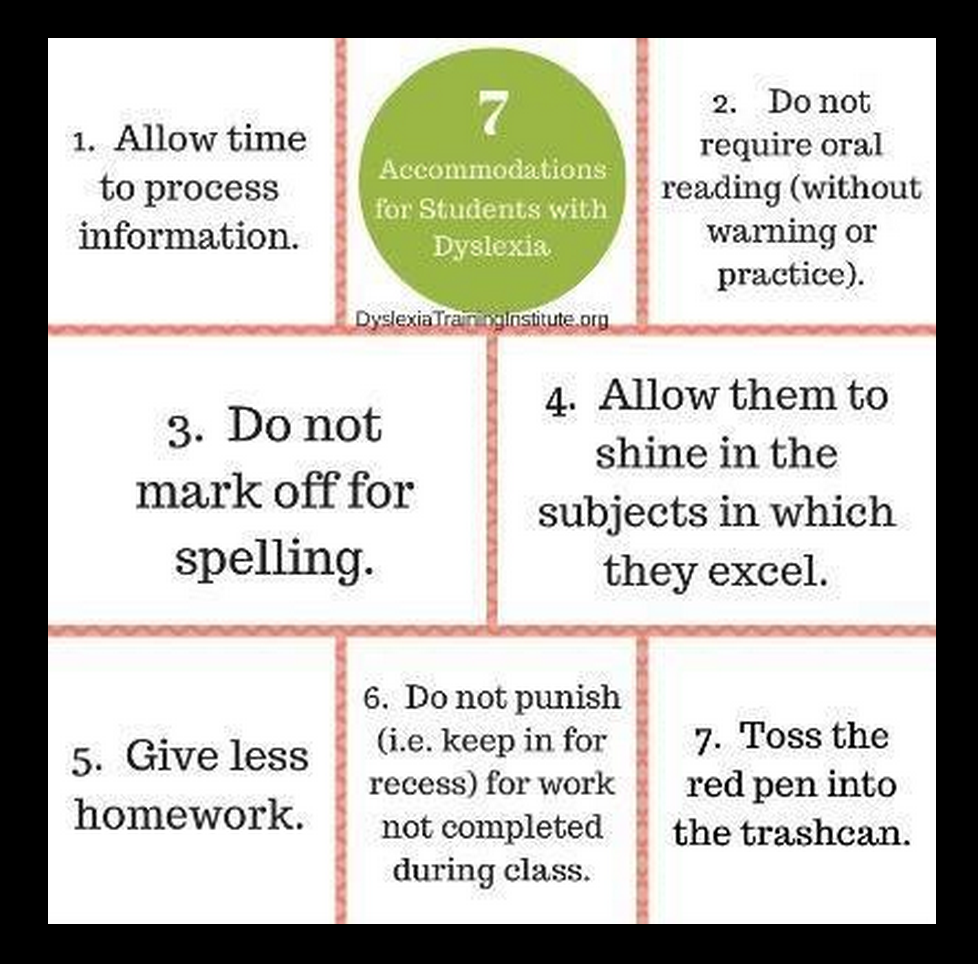Parent and Educator Resource Guide to Section 504 in Public Elementary
and Secondary School pamphlet was just published by the US Department of
Education, Office of Civil Rights. It’s available at the following link
https://www2.ed.gov/about/offices/list/ocr/docs/504-resource-guide-201612.pdf
Tag Archives: accommodations for dyslexia
Accommodations
Dyslexia
Dyslexia simply put is a condition that causes difficulty in reading that is unrelated to a person’s intelligence. According to The International Dyslexia Association,
Dyslexia is a language-based learning disability. Dyslexia refers to a cluster of symptoms, which result in people having difficulties with specific language skills, particularly reading. Students with dyslexia usually experience difficulties with other language skills such as spelling, writing, and pronouncing words. Dyslexia affects individuals throughout their lives; however, its impact can change at different stages in a person’s life. It is referred to as a learning disability because dyslexia can make it very difficult for a student to succeed academically in the typical instructional environment, and in its more severe forms, will qualify a student for special education, special accommodations, or extra support services.
DISCLAIMER: No two dyslexic students have exactly the signs or symptoms or responds to remediation in exaclty the same way. People with dyslexia are on a spectrum and often have additional conditions that impact them. The following is generalized information and some students have a few of the signs while others have many. As a tutor, I do an informal assessment to identify what the child knows prior to beginning tutoring. A comprehensive evaluation is important to determine underlining factors.
From the National Center for Learning Disablities
What Are the Warning Signs of Dyslexia?
The following are common signs of dyslexia in people of different ages. If you or someone you know displays these signs, it doesn’t necessarily mean you have a learning disability. But if troubles continue over time, consider testing for dyslexia.
Dyslexia: Warning Signs By Age
Young ChildrenTrouble With:
|
School-Age ChildrenTrouble With:
|
Teenagers and AdultsTrouble With:
|
More details on Warning Signs can be found at:
http://www.ncld.org/types-learning-disabilities/dyslexia/common-dyslexia-symptoms-warning-signs-in-children-in-grades-3-8
and
http://www.interdys.org/ewebeditpro5/upload/DyslexiaBasicsREVMay2012.pdf
Accommodations for Dyslexia – coming soon

